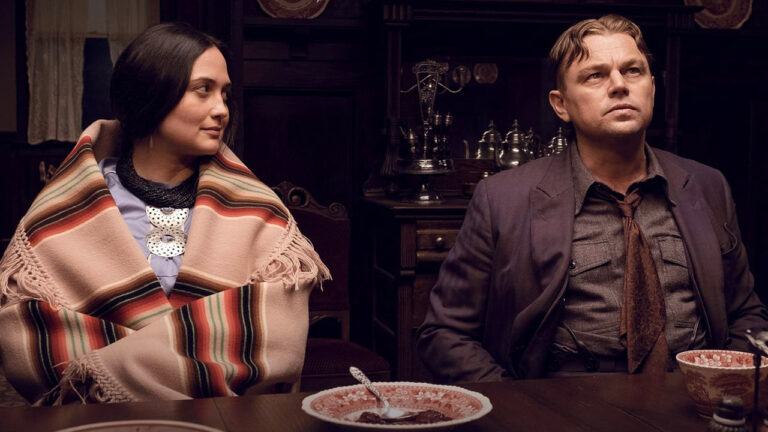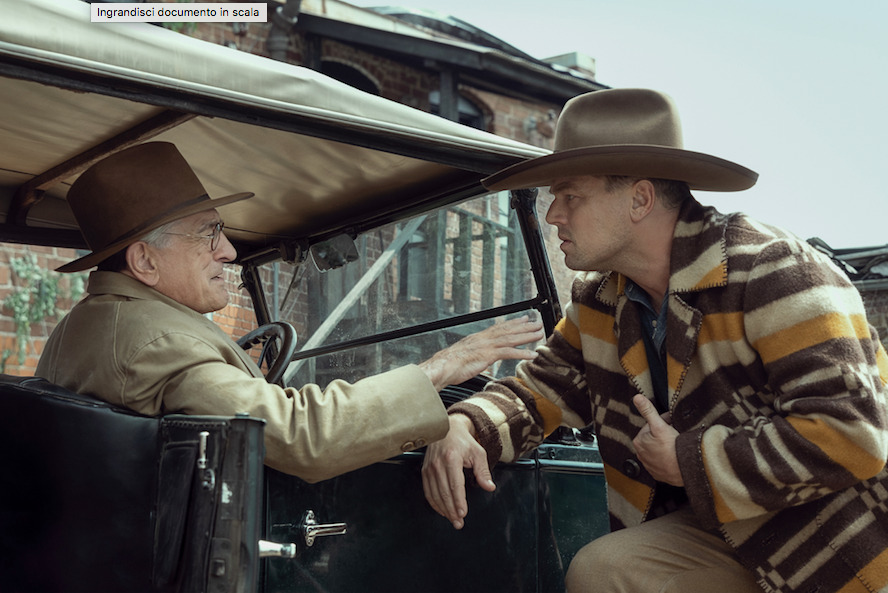
There’s a horrific chapter in American history that concerns the way white settlers used fatal means to seize the wealth of the Osage people of Oklahoma in the early 20th century. This story was captured in the book Killers Of The Flower Moon, written by David Grann, that Martin Scorsese has transformed into a film.
The movie retraces the heinous murders and strategic weddings carried out by white people towards native women, in a time when oil was discovered on tribal land. Eventually the FBI investigated into the matter and brought down this system of violence.
Martin Scorsese co-wrote the screenplay of Killers Of The Flower Moon with Eric Roth, and cast the actors he has had a longtime collaboration with, such as Leonardo DiCaprio and Robert De Niro — for the latter this marks the tenth collaboration with the American filmmaker. The film also includes performances by the talented Lily Gladstone in a leading role, as well as Jesse Plemons, Tantoo Cardinal, John Lithgow, and Brendan Fraser in supporting roles. The film, that will be released on Apple TV+, premiered at the 76th Cannes Film Festival where it received a nine-minute standing ovation.

The angle of the storytelling is ingenious, since we follow the perspective of the slimy and mediocre Ernest Burkhart (Leonardo DiCaprio). He is fickle and behaves like a weathervane, veering with every change of current opinion, following the lead of his uncle William King Hale (Robert De Niro), loving in his own contradictory way his Native American wife Mollie Burkhart (Lily Gladstone) and giving into Tom White (Jesse Plemons), an agent of the FBI investigating the murders.
The driving force of the storytelling is white man’s greed for oil, not stopping in the face of terrible crimes and denying the truth to the last, even in the face of evidence. Killers Of The Flower Moon takes three hours and twenty-six minutes to prove its point; only after a couple of hours does the Federal Bureau of Investigation enter the picture. The way the premise is stretched out makes the film rather fatiguing. Nevertheless, Scorsese’s masterful acumen shines stronger than ever. This picture is a synthesis of the artistry he has displayed throughout his entire filmography: it’s a gangster movie, a spiritual oeuvre, a western, a crime drama.

The novelty about Killers Of The Flower Moon is the way Martin Scorsese shows men hungry for power in a different way than in his previous films, this time they are dull and repelling. The emotional and moral centre is represented by Mollie and her sisters, who respond with faith and trust to those around them. The dignity of the Native American woman epitomises the the true wealth of the Osage Nation, wasted and trampled on by those who cannot understand the true value of that carpet of posies that bloom every May, known as the ‘Flower Moon.’
Two opposing worlds come together through marriage, a union that initially seems to have foundations of attraction and love. But Mollie’s empathy, that symbolises hope for her land, clashes with Ernest’s inclination to destruction. He is the venom of white capitalism that poisons the purity of the native roots.
Killers Of The Flower Moon has some mesmeric instances that are majestic, like the portrayal of fire through a visual recreation that evokes the use of shadow play. Even the choices of storytelling devices is extraordinary. In fact, the real stroke of genius is at the end, when the epilogue of the entire denouement is told through a radio recording session that will leave room for surprises.
Final Grade: A-

